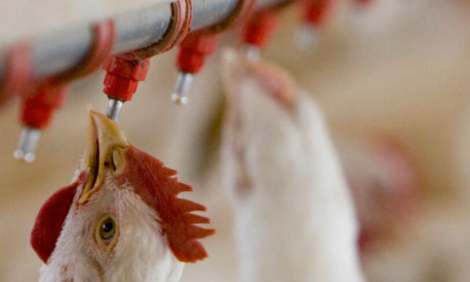



Why the difference?
Why do eggs from the same source give different results in different hatcheries?Eggs from the same source delivered to different hatcheries will often give different results, even though their biological quality was identical and they were collected from the same flock with the same nutrition and health status during the same period, day after day. Nevertheless, the results can differ substantially and consistently.
Assuming that the fertility level in batches delivered to different hatcheries was the same, the difference in hatchery results can only be explained by differences in embryo mortality. Embryo mortality during incubation follows a certain pattern: most embryos die during the first or last few days and mortality is low for the remaining days. For a high hatch of fertile (HOF) of 95%, about 2% would be lost in the first three to four and last three to four days of incubation, while fewer than 1% would die in the period in between.
There are many factors that can affect the results from different hatcheries. These include egg transportation, storage, disinfection, type and technical status of installed equipment, local climate, altitude, incubation programme, applied procedures, knowledge and experience of staff, and a lot more.
Comparing hatchery results from different hatcheries, we usually notice a difference in the Hatch of Eggs Set (HOS) first. A detailed analysis of differences, even for identical HOS, allows the identification of possible mistakes and ways to remedy these.
Where do we see the differences?
- Difference in % fertility?
Eggs from the same flock collected during the same period should have the same true fertility. A difference can only be explained by a difference in early embryonic mortality and the classification of early dying eggs as ‘clears’. Opening at least samples of clears selected at an early phase, or even of eggs not yet incubated, can help to determine the most likely cause of an increased early embryo mortality. Was the transport too warm or too rough, or was there improper, prolonged egg storage under unstable conditions? Check the disinfection system: when, how and how often are the eggs disinfected and what kind of disinfectant is used?
- Mortality during first few days of incubation?
Beside the factors mentioned above, the most likely incubation-related reason for early embryo mortality is an incorrect temperature. This can be related to the incubation programme, a poor technical status of incubators leading to a non-uniform environment inside the setter, or a too rapid or too slow increase in temperature. It may also be related to disinfectant remaining on the eggs or a turning failure.
- Differences seen at transfer?
Transfer, usually combined with candling, provides an overview of embryo mortality at different phases of development. The distribution of losses in different hatcheries can be compared. An increased number of bangers reveals a difference in hygiene level and suggests egg ‘sweating’.
- Hatching and chicks?
The final hatch result shows the quality of the incubation programme and the hatchery procedures. Dead embryos not identified by conventional candling will be found at hatch. The number of unhatched eggs found in the baskets, the phase when the embryos stopped developing (internal/external pipping or earlier) and the status of eggshells (dryness, cleanness, height of pipping) help to identify weaknesses in the process. The first factors to review are the eggshell temperature after day 12 and the egg weight loss. The chicks themselves, their quality and condition at hatch, the frequency and type of disorders, and mortality in the first week of life can also differ substantially between hatcheries, even if the chicks were produced from the ‘same’ eggs.
Advice:
- When comparing results, look further than global hatchability numbers.
- Consider the details: search for the type of difference and its timing.
- Use this information to upgrade your programmes and procedures.








